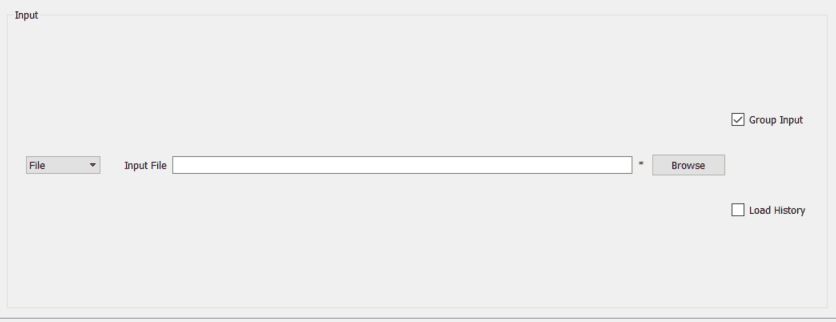Indirect Geometry Changes¶
New Features¶
The Elwin tab in Inelastic Data Analysis has a new loader which now allows users to add workspaces.

Fit functions ElasticIsoRotDiff and InelasticIsoRotDiff have been made available in the ConvFit tab in the Inelastic Data Analysis interface.
Improvements¶
Single input has been removed from the Inelastic Data Analysis Fit tabs. All data input is now done via the multiple input dialog.
The data input widgets in the Inelastic Data Analysis Fit tabs has been made dockable and can be resized once undocked.
Updated Inelastic Data Analysis and Elwin and I(Q,t) documentation with new screenshots and details of the new Elwin loader.
Bugfixes¶
A bug has been fixed in Inelastic Data Analysis on the F(Q)Fit Multiple Input tab that allowed duplicate spectra to be added.
A bug has been fixed that stopped additional spectra being added to Inelastic Data Analysis if spectra from that workspace had already been added.
A bug has been fixed in Inelastic Data Analysis that limited the integration range on the tabs to between -1 and 1.
A bug has been fixed in Elwin tab that caused Mantid to crash if a file of the wrong format was loaded.
Algorithms¶
New Features¶
A new option
Autoconvolutionis added to the Abins Algorithm. This enables simulation of quantum orders up to order 10 by convolving the highest calculated spectrum (order 1 or 2) against the fundamentals spectrum repeatedly, before applying Debye-Waller terms. (NB: This has introduced small numerical differences from previous versions of Abins, because data is now binned before applying Debye-Waller terms. This difference will converge with small bin sizes.)
Improvements¶
Introduced multithreading for detectors/spectra to VesuvioCalculateMS in order to speed up the VesuvioAnalysis algorithm.
The Abins Algorithm can now import XML data from VASP calculations using
selective dynamicsto restrict the set of atoms active in vibrations. The data is imported and processed as though these are the only atoms in the system, with appropriately-dimensioned displacement data. This approximation is useful for the study of light (e.g. organic) molecules adsorbed to surfaces of heavy (e.g. noble-metal) catalysts.Abins Algorithm: Thresholding of low-intensity modes has been changed. This impacts the second-order spectrum, especially at elevated temperature; excitations were being discarded on the basis of a low intensity in the fundamental spectrum, when they could contribute to a noticeable peak in the second-order spectrum.
Bugfixes¶
IndirectILLEnergyTransfer will now perform the monitor normalisation correctly; that is, in wavelength instead of energy. It will also provide the monitor workspace as a diagnostic output, if requested.